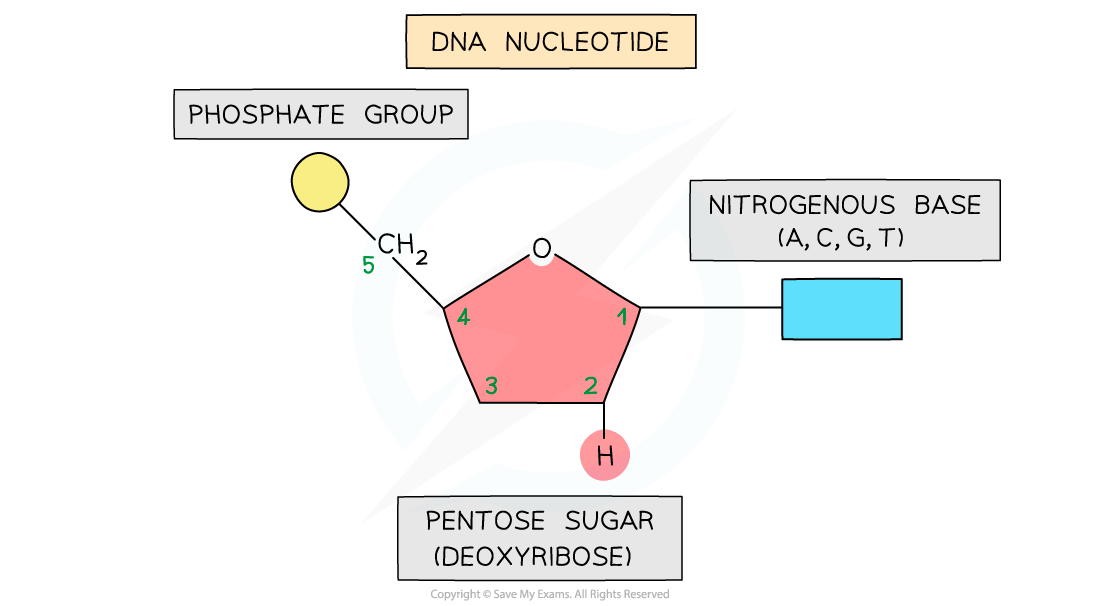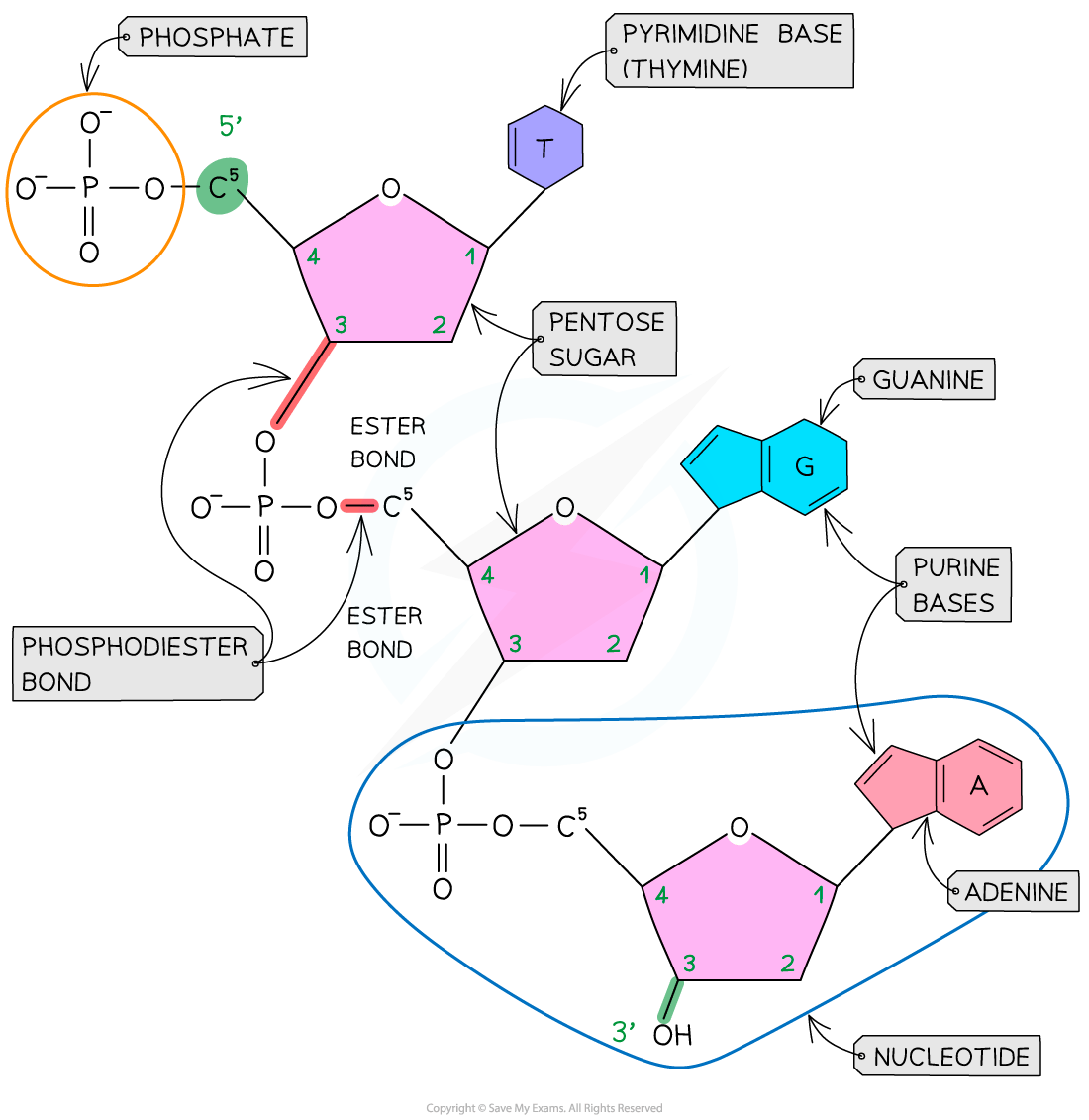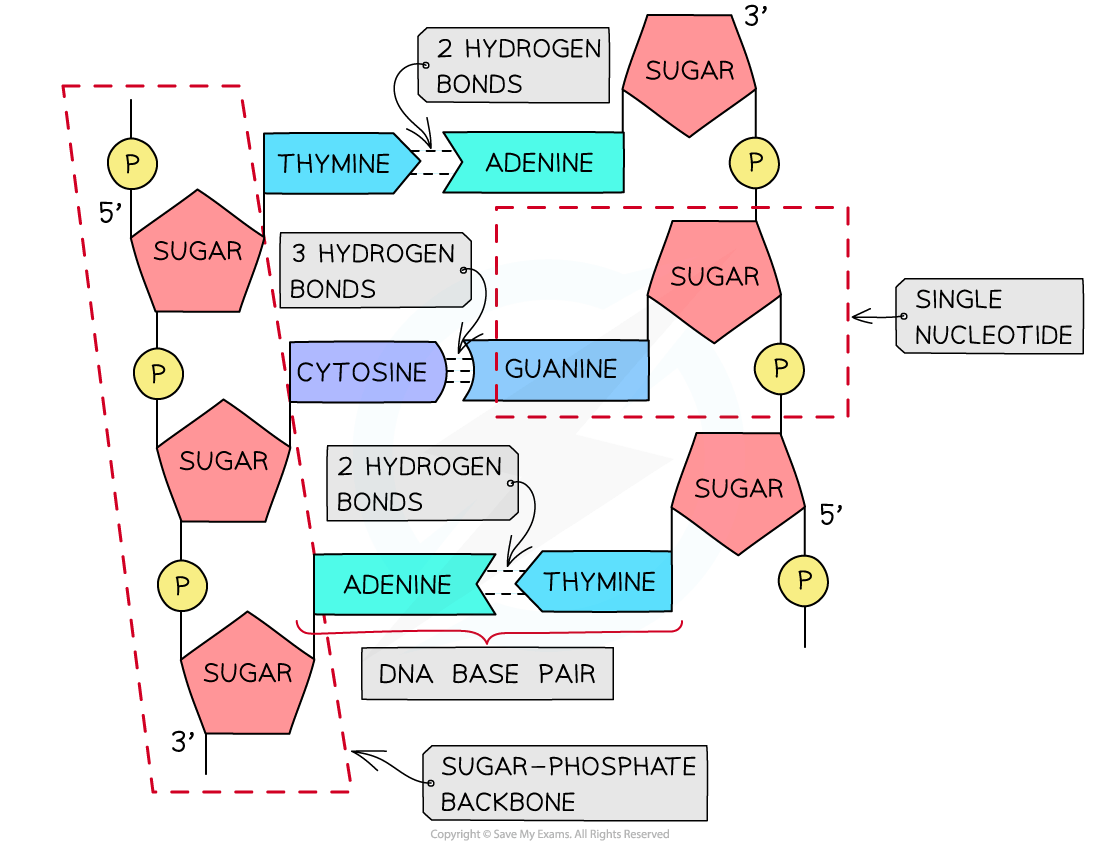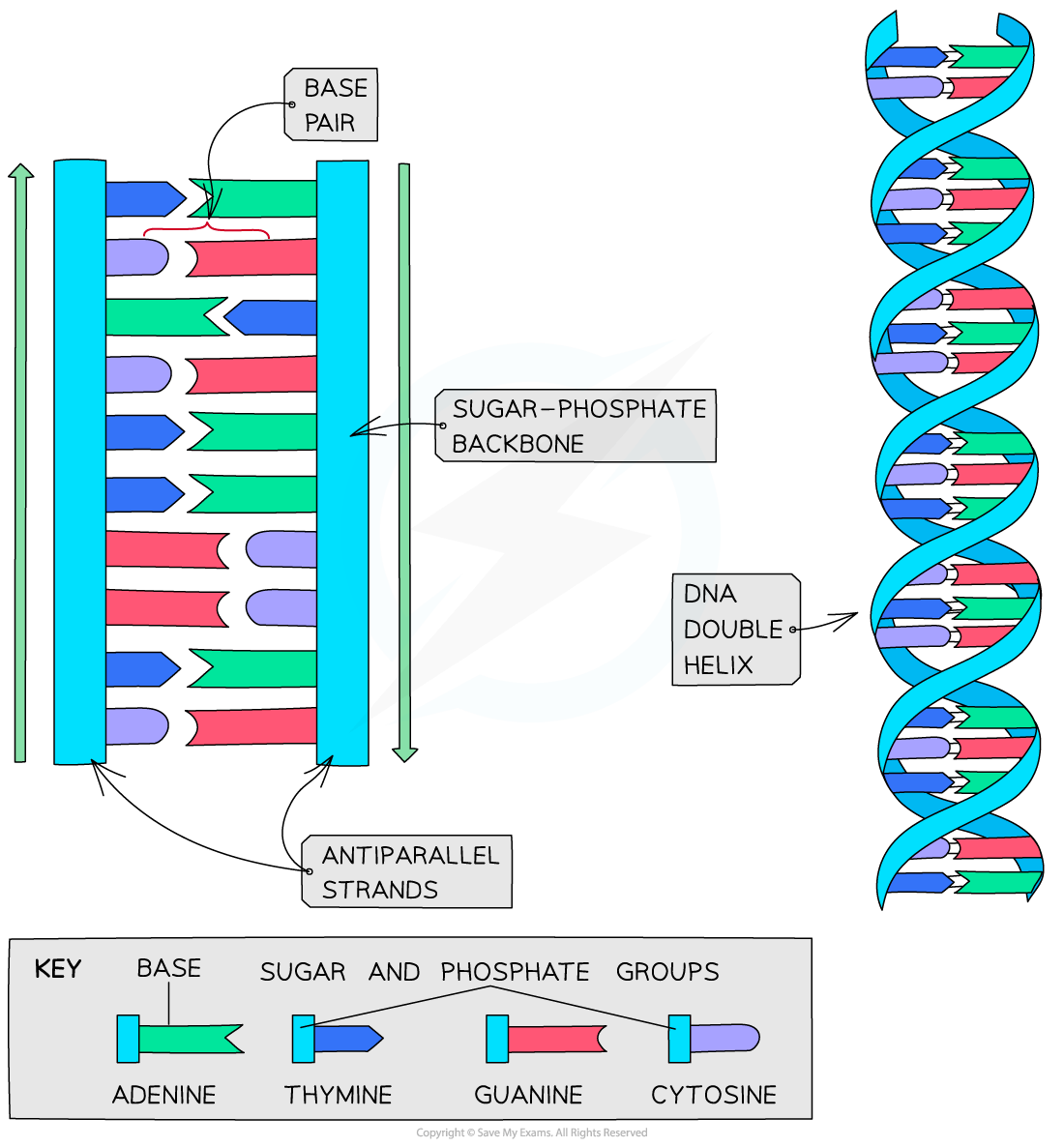The Structure of DNA (Cambridge (CIE) A Level Biology): Revision Note
Exam code: 9700
DNA structure
The nucleic acid DNA is a polynucleotide—it is made up of many nucleotides bonded together in a long chain

DNA molecules are made up of two polynucleotide strands lying side by side, running in opposite directions
The strands are said to be antiparallel
Each DNA polynucleotide strand is made up of alternating deoxyribose sugars and phosphate groups bonded together to form the sugar-phosphate backbone
These bonds are covalent bonds known as phosphodiester bonds
The phosphodiester bonds link the 5-carbon of one deoxyribose sugar molecule to the phosphate group from the same nucleotide
The phosphate group is linked by another phosphodiester bond to the 3-carbon of the deoxyribose sugar molecule of the next nucleotide in the strand
Each DNA polynucleotide strand is said to have a 3’ end and a 5’ end (these numbers relate to which carbon on the pentose sugar could be bonded with another nucleotide)
As the strands run in opposite directions (they are antiparallel), one is known as the 5’ to 3’ strand and the other is known as the 3’ to 5’ strand
The nitrogenous bases of each nucleotide project out from the backbone towards the interior of the double-stranded DNA molecule

Hydrogen bonding
The two antiparallel DNA polynucleotide strands that make up the DNA molecule are held together by hydrogen bonds between the nitrogenous bases
These hydrogen bonds always occur between the same pairs of bases:
The purine adenine (A) always pairs with the pyrimidine thymine (T)
Two hydrogen bonds are formed between these bases
The purine guanine (G) always pairs with the pyrimidine cytosine (C)
Three hydrogen bonds are formed between these bases
This is known as complementary base pairing
These pairs are known as DNA base pairs

Double helix
DNA is not two-dimensional as seen in the diagram above
DNA is described as a double helix
This refers to the three-dimensional shape that DNA molecules form

Examiner Tips and Tricks
Make sure you can:
Name the different components of a DNA molecule (sugar-phosphate backbone, nucleotide, complementary base pairs, phosphodiester bonds, hydrogen bonds)
Locate these on a diagram
You must know how many hydrogen bonds occur between the different base pairs.
Remember that the bases are complementary so the number of A = the number of T and the number of C = the number of G.
You could be asked to determine how many bases are present in a DNA molecule if given the number of one of the bases.

Unlock more, it's free!
Did this page help you?